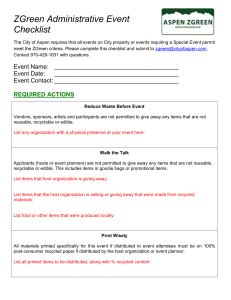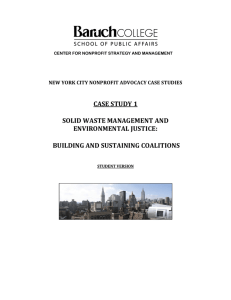Steps to zero waste events
advertisement
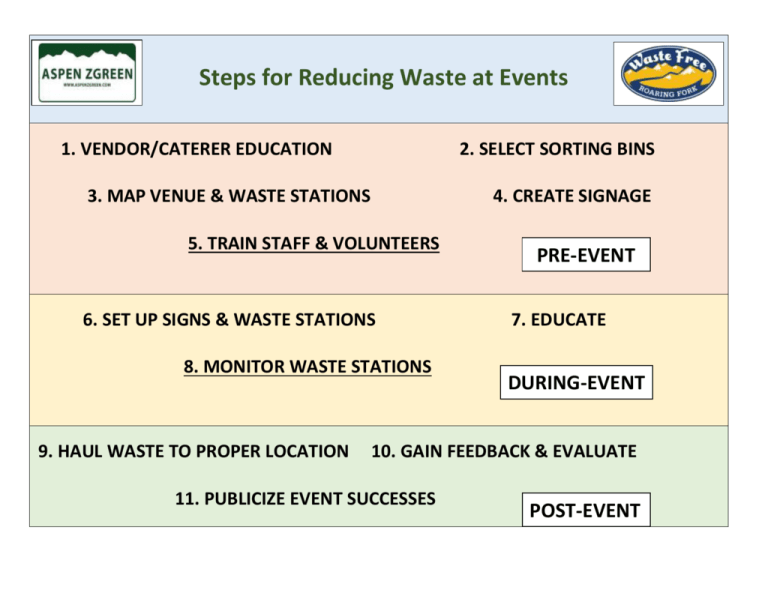
Steps for Reducing Waste at Events 1. VENDOR/CATERER EDUCATION 2. SELECT SORTING BINS 3. MAP VENUE & WASTE STATIONS 4. CREATE SIGNAGE 5. TRAIN STAFF & VOLUNTEERS 6. SET UP SIGNS & WASTE STATIONS 8. MONITOR WASTE STATIONS 9. HAUL WASTE TO PROPER LOCATION PRE-EVENT 7. EDUCATE DURING-EVENT 10. GAIN FEEDBACK & EVALUATE 11. PUBLICIZE EVENT SUCCESSES POST-EVENT Steps for Reducing Waste at Events 1. Vendor/Caterer Education Send out information about what can and cannot be given out. Include ordering information for foodware (compostable or recyclable. Send information about how the vendors/caterers can participate in the reduction of waste. 2. Select Sorting Bins Decide what type of waste stations you will use (dual recycling & trash, or tri - compost, recycling, & trash – NO SINGLE USE CANS!). 3. Map of Venue and Waste Station Placement Design where the waste stations will go and share that map with the vendors/caterers and others involved with the event. 4. Create Signage Make sure the colors, words, and images are coordinated for each waste stream. Design signs to go on sorting bins and above waste stations. 5. Train Staff and Volunteers Hand out information before the event so the staff & volunteers know how you are reducing waste & what the waste stations look like. Conduct an in-person training to educate everyone about what items get sorted into which bins. 6. Set Up Signs & Waste Stations Put waste stations in place according to map. Install signs. 7. Educate Announce the event’s waste reduction efforts; include waste sorting info in program; talk to attendees-vendors-sponsors about waste reduction efforts. 8. Monitor Waste Stations It’s most effective to have people stand at each waste station directing people on what goes where. Monitor for contamination and either sort material or trash the load and start with a new bag. 9. Haul Waste to Proper Location Be sure there is no trash (<10%) inside the compost and recycling loads. Take compost to municipal compost pile. Take recycling to recycling drop off. Take trash and contaminated loads to landfill. Note the amount of each type of waste. 10. Gain Feedback and Evaluate Calculate the diversion rate (amount of compost and recycling/amount of total waste x 100). Discuss the challenges and successes with vendors, staff, and attendees. Make a plan for the next event. 11. Publicize Event Success Share your story with others!
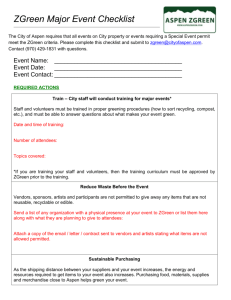

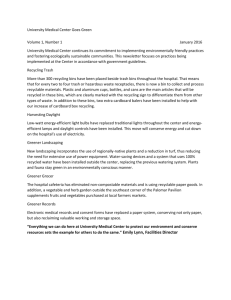


![School [recycling, compost, or waste reduction] case study](http://s3.studylib.net/store/data/005898792_1-08f8f34cac7a57869e865e0c3646f10a-300x300.png)

